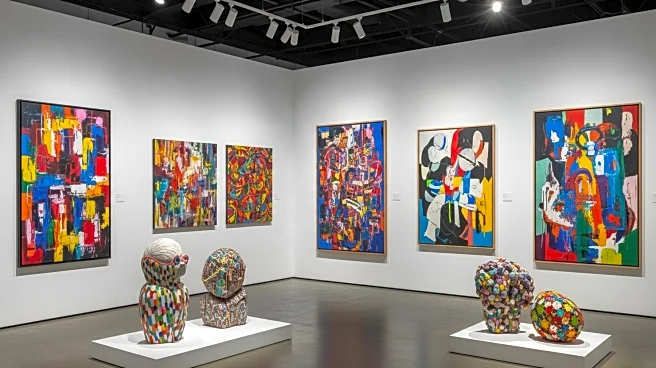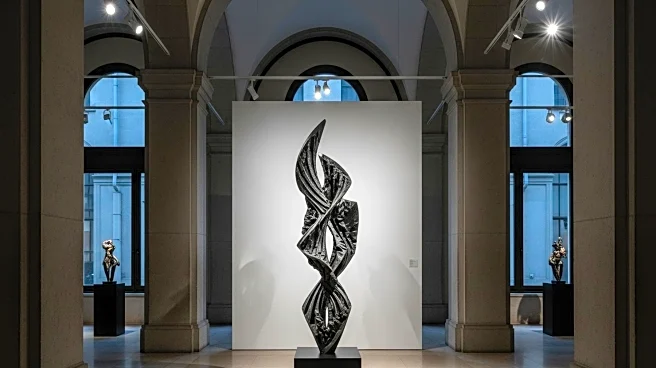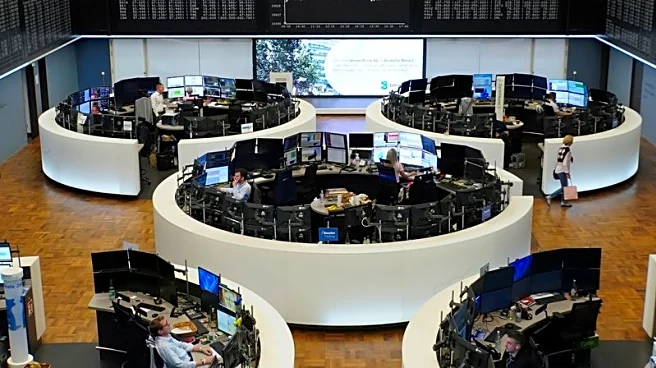What's Happening?
The Turner Prize 2025 exhibition has opened at Bradford's Cartwright Hall Art Gallery, featuring nominees such as Nnena Kalu, Rene Matić, Mohammed Sami, and Zadie Xa. Nnena Kalu's nomination is particularly significant as it represents a watershed moment for learning disabled artists. Her work, supported by ActionSpace, includes suspended sculptures and vortex drawings. The exhibition is part of the UK City of Culture festival and runs until February 2026. Critics have praised Kalu's work, with Adrian Searle of the Guardian tipping her for the win. Other nominees include Mohammed Sami, whose work reflects his experiences under Saddam Hussein's dictatorship, and Rene Matić, who explores Britishness and identity.
Why It's Important?
The nomination of Nnena Kalu for the Turner Prize highlights the growing recognition and inclusion of learning disabled artists in the mainstream art world. This development is significant for the learning disabled artist community both nationally and internationally, as it challenges stereotypes and promotes diversity in artistic expression. The Turner Prize, one of the most prestigious awards in contemporary art, provides a platform for artists to gain visibility and influence, potentially leading to broader societal acceptance and support for artists with disabilities.
What's Next?
The winner of the Turner Prize will be announced on December 9, with the recipient receiving £25,000, while the other shortlisted artists will receive £10,000 each. The exhibition will continue to attract visitors and spark discussions about the role of art in addressing social issues and promoting inclusivity. The recognition of learning disabled artists may encourage more institutions to support and showcase diverse voices in the art community.
Beyond the Headlines
The Turner Prize's focus on artists addressing themes of identity, society, and contemporary culture reflects broader cultural shifts towards inclusivity and representation. The inclusion of learning disabled artists challenges traditional notions of artistic merit and highlights the importance of diverse perspectives in shaping cultural narratives. This development may inspire other sectors to adopt more inclusive practices, fostering a more equitable society.












